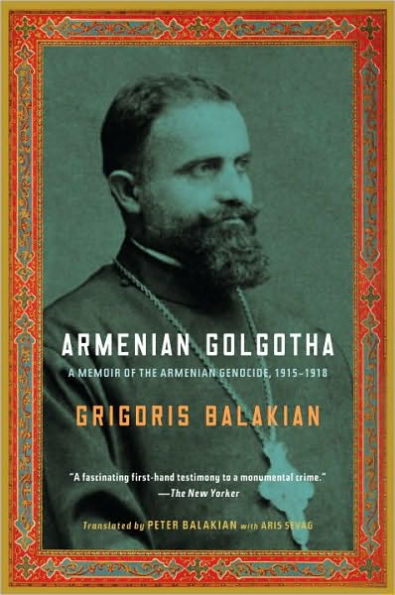Armenian Golgotha: A Memoir of the Armenian Genocide, 1915-1918
On April 24, 1915, Grigoris Balakian was arrested along with some 250 other leaders of Constantinople’s Armenian community. It was the beginning of the Ottoman Empire’s systematic attempt to eliminate the Armenian people from Turkey—a campaign that continued through World War I and the fall of the empire. Over the next four years, Balakian would bear witness to a seemingly endless caravan of blood, surviving to recount his miraculous escape and expose the atrocities that led to over a million deaths.
Armenian Golgotha is Balakian’s devastating eyewitness account—a haunting reminder of the first modern genocide and a controversial historical document that is destined to become a classic of survivor literature.
1123675335
Armenian Golgotha is Balakian’s devastating eyewitness account—a haunting reminder of the first modern genocide and a controversial historical document that is destined to become a classic of survivor literature.
Armenian Golgotha: A Memoir of the Armenian Genocide, 1915-1918
On April 24, 1915, Grigoris Balakian was arrested along with some 250 other leaders of Constantinople’s Armenian community. It was the beginning of the Ottoman Empire’s systematic attempt to eliminate the Armenian people from Turkey—a campaign that continued through World War I and the fall of the empire. Over the next four years, Balakian would bear witness to a seemingly endless caravan of blood, surviving to recount his miraculous escape and expose the atrocities that led to over a million deaths.
Armenian Golgotha is Balakian’s devastating eyewitness account—a haunting reminder of the first modern genocide and a controversial historical document that is destined to become a classic of survivor literature.
Armenian Golgotha is Balakian’s devastating eyewitness account—a haunting reminder of the first modern genocide and a controversial historical document that is destined to become a classic of survivor literature.
21.0
In Stock
5
1

Armenian Golgotha: A Memoir of the Armenian Genocide, 1915-1918
576
Armenian Golgotha: A Memoir of the Armenian Genocide, 1915-1918
576
21.0
In Stock

Product Details
| ISBN-13: | 9781400096770 |
|---|---|
| Publisher: | Knopf Doubleday Publishing Group |
| Publication date: | 03/09/2010 |
| Pages: | 576 |
| Product dimensions: | 6.10(w) x 9.00(h) x 1.30(d) |
About the Author
From the B&N Reads Blog
